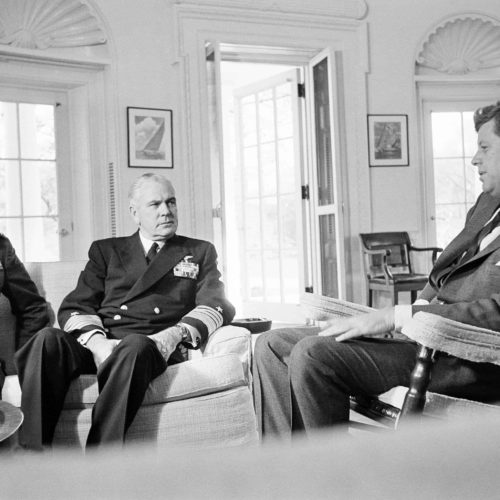Introduction
Correction: A previous version of this story incorrectly stated Soviet missiles were found during WWII, instead of 1962.
We’re continuing our Q&A series with reporters who publish powerful stories. This week we have Yahoo! News reporter Sean Naylor, who reported on the untold story of how CIA officer Tom Hewitt trained a network of agents who found Soviet missiles in Cuba during 1962. You may have seen photos of the Soviet missiles in Cuba captured by the U-2 spy planes — but that’s not what fully went down. Countless histories of the Cuban Missile Crisis credited the spy planes without recognizing Hewitt, the accepted version of events was wrong — or at least missing some serious context. (Sean’s account is lightly edited for clarity and brevity.)
How did you find the story?
I was tipped to the story in 2005 or early 2006 by a friend of Tom Hewitt’s family. This friend had attended the CIA award ceremony at which Hewitt’s widow was presented with Tom’s posthumous award. My tipster told me the award citation said that the missiles were found by Tom Hewitt’s team, not the U-2 spy planes. I was somewhat skeptical. How could so many scholars and other authors have not known about this? But I then spoke with Mrs. Hewitt, who gave me a copy of the (unclassified!) award citation, which included the following sentence: “Public credit for the discovery of the missiles in Cuba was given to the U-2 reconnaissance aircraft in order to preserve the security of the team that he created, trained, managed, and motivated through one of the darkest period[s] of the Cold War.” There it was, in plain English. At that point I knew I had a big story on my hands.
What were the challenges of reporting, how did you navigate them?
I made an effort to report the story in the 2006-2009 period. Tom Hewitt had died, bur his son was working at CIA at the time. Mrs. Hewitt was concerned it might place her son’s job at risk. I reluctantly put the story aside.
Fast forward to summer 2018. As Yahoo! News’s new national security correspondent, I mentioned the story to my bosses, who encouraged me to pursue it. Mrs. Hewitt had died in 2017, but her son had left the CIA and was keen to see his father’s story told. I was able to interview Rudy Enders, a former CIA officer who had worked with Hewitt in Miami. He provided key details. Ten years after my initial fruitless efforts, an internet search for “AMBANTY-1” — the code name of Hewitt’s principal agent — turned up references that identified him as Esteban Marquez Novo. Using that information, I was able to find out a lot more about the spy network he had built in Cuba.
Takeaway: Journalists write (and rewrite) history.


Join the conversation
Show Comments